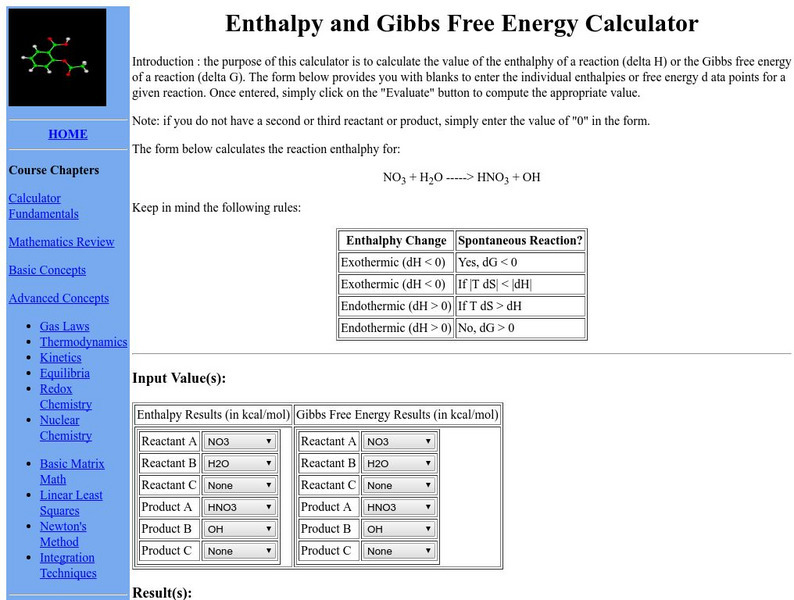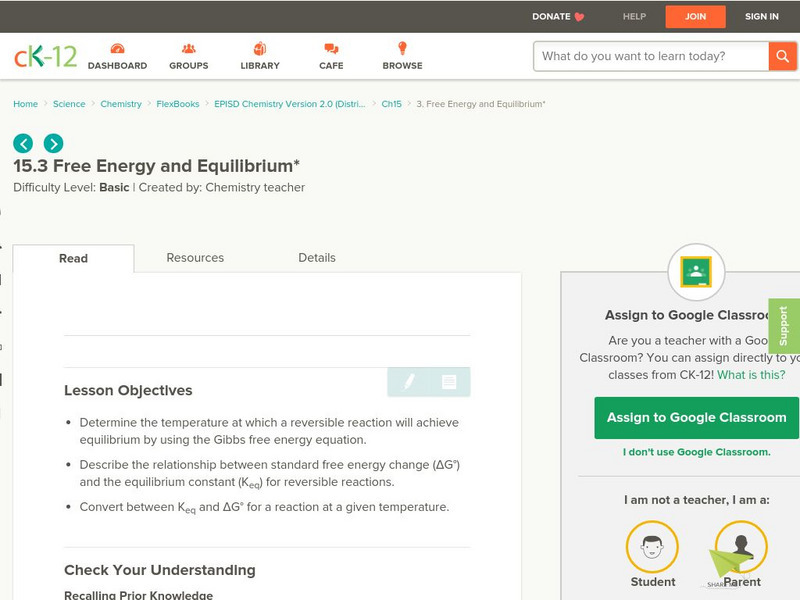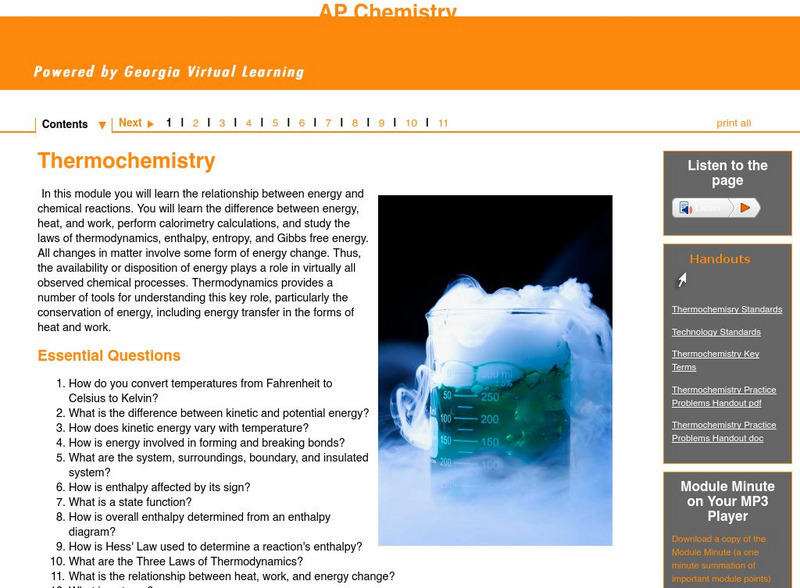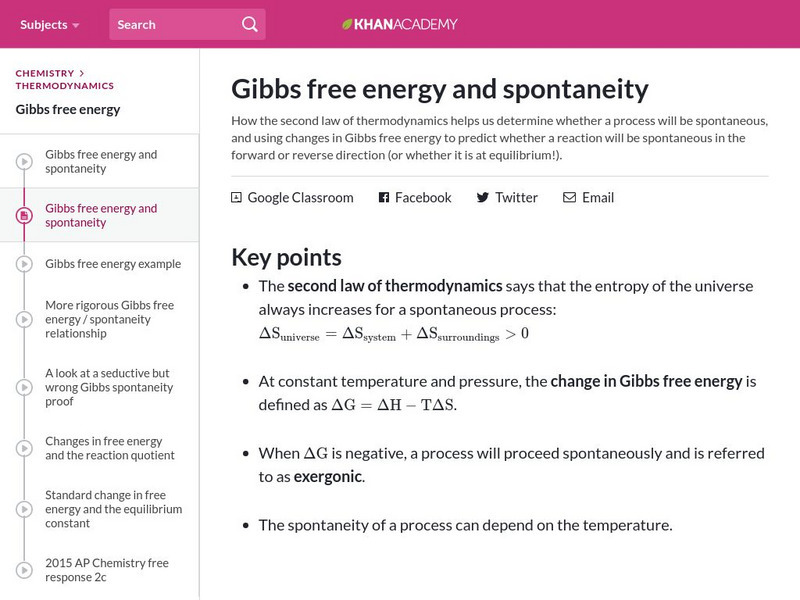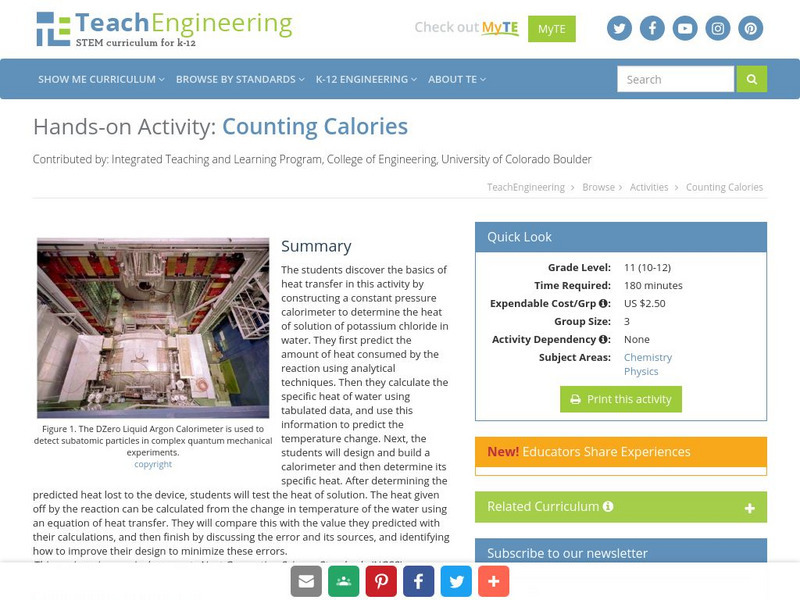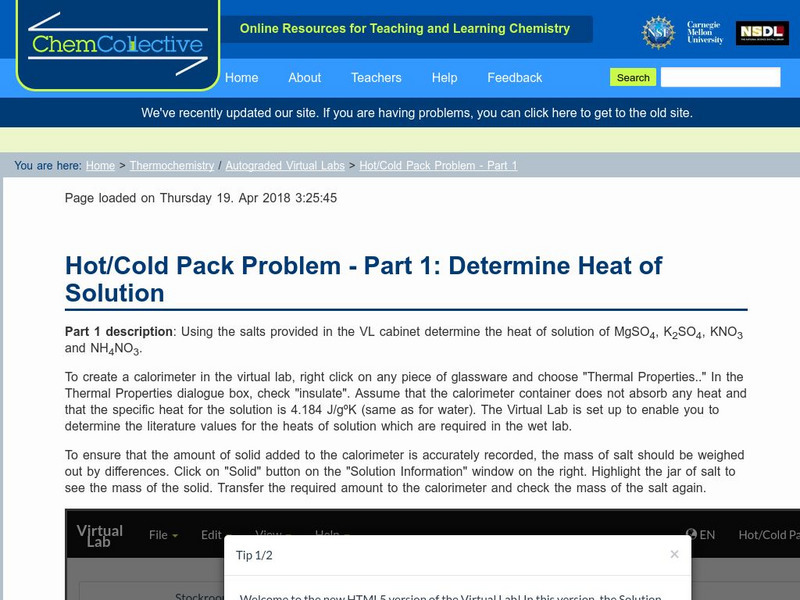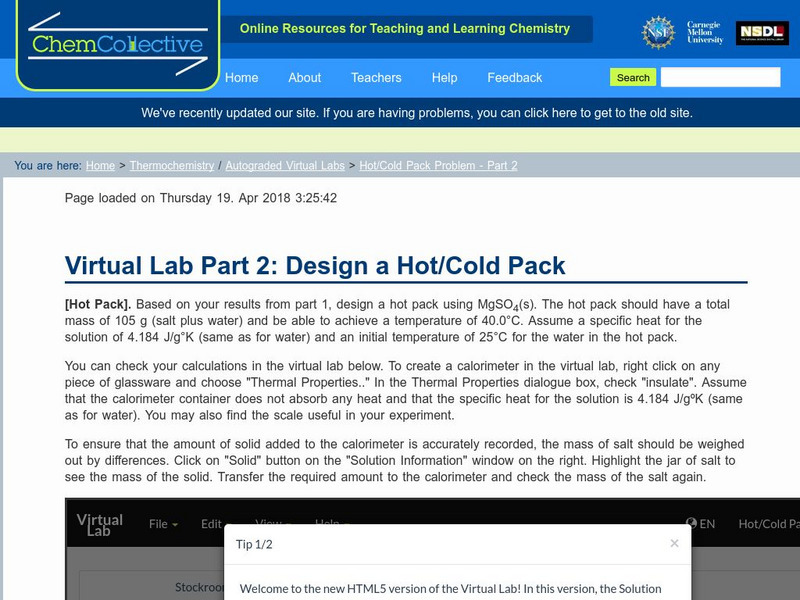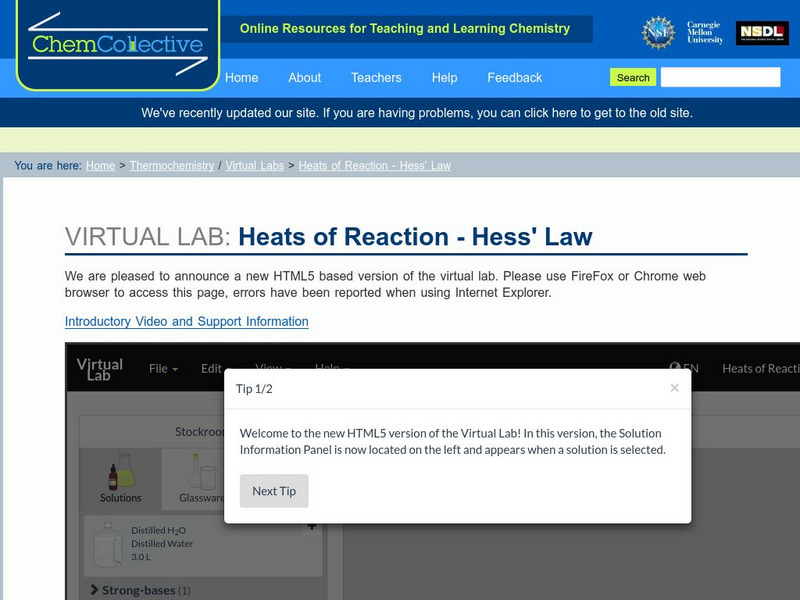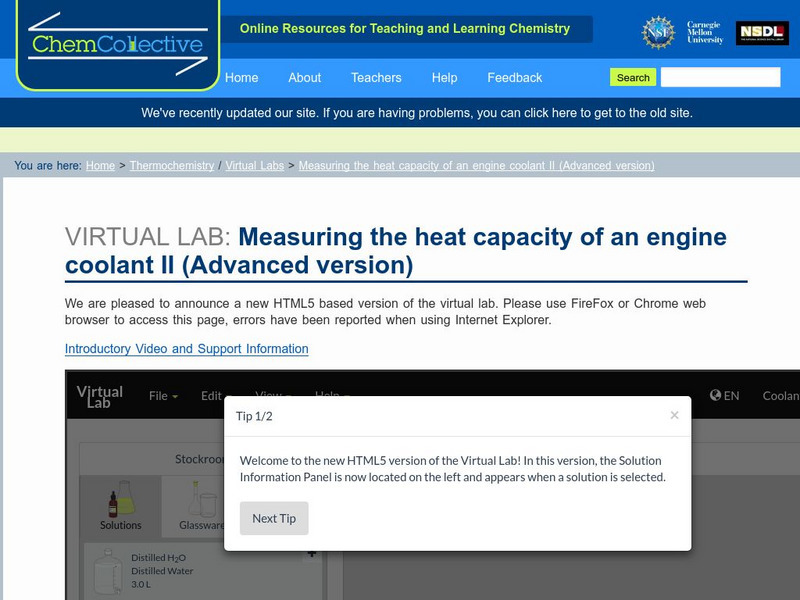Curated OER
Chemistry II Enthalpy Worksheet
In this enthalpy equation learning exercise, students are given 3 examples of chemical reactions. Students then respond to 4 practice problems and 1 challenge problem in regard to heat and energy change and release.
Curated OER
Exothermic and Endothermic Changes
Pupils define and identify endothermic/exothermic reactions. Using a series of experiments, they construct and interpret potential energy diagrams for their reactions.
Curated OER
The Enthalpy of Chemical Change
In this chemical change worksheet, learners review enthalpy and use Hess's law to calculate enthalpy and the heat of reaction for given reactions. This worksheet has 3 problems to solve.
Curated OER
Chemical Reactions
In this chemical reactions worksheet, students determine the half-life of a chemical compound for a decomposition reaction. Students determine the activation energy for the reverse of a reaction. This worksheet has 2 problems to solve.
Curated OER
Thermometric Titration of an Unknown Acid
Students determine the number of ionizable hydrogen's in an unknown acid and determine the equivalent weight of an unknown acid. They determine the enthalpy change for the ionization of an unknown acid.
Chemistry Collective
Chem Collective: Camping Problem
Measure the enthalpy of a reaction and then create a solution warm enough to cook food.
California State University
California State University: Hess' Law
Interactive site that generates random Hess's Law problems for you to solve. Allows you immediate feedback on your ability to use Hess's Law.
Shodor Education Foundation
Shodor: Enthalpy and Gibbs Free Energy Calculator
Interactive calculator that allows you to input reactants and products of a reaction and calculate the change in enthalpy and Gibbs Free Energy for the reaction.
TED Talks
Ted: Ted Ed: What Triggers a Chemical Reaction
Understand chemical reactions by learning about enthalpy and entropy.
Simon Fraser University
Chem1 Virtual Textbook: Gibb's Free Energy
With an overview of topics related to chemical equilibrium, this site provides a foundation to a study of thermodynamics and energy. The site specifically addresses free energy and the Gibbs function.
CK-12 Foundation
Ck 12: Spontaneous Reactions and Free Energy
[Free Registration/Login may be required to access all resource tools.] Students discover the concept of a spontaneous reaction in terms of enthalpy and entropy changes, and then investigate and calculate free energy.
CK-12 Foundation
Ck 12: Free Energy and Equilibrium
[Free Registration/Login may be required to access all resource tools.] Students determine the temperature at which a reversible reaction will achieve equilibrium by using the Gibbs free energy equation, and then describe the...
Georgia Department of Education
Ga Virtual Learning: Ap Chemistry: Thermochemistry
In this module students learn the relationship between energy and chemical reactions, and understand the difference between energy, heat, and work. They perform calorimetry calculations, and study the laws of thermodynamics, enthalpy,...
Khan Academy
Khan Academy: Bond Enthalpy and Enthalpy of Reaction
Explanation of bond enthalpy that includes examples of calculating enthalpies of reaction using bond enthalpy.
Khan Academy
Khan Academy: Gibbs Free Energy and Spontaneity
Explanation of Gibbs Free Energy and Spontaneity. Includes formulas and examples.
TeachEngineering
Teach Engineering: Counting Calories
The students discover the basics of heat transfer in this activity by constructing a constant pressure calorimeter to determine the heat of solution of potassium chloride in water. They first predict the amount of heat consumed by the...
TeachEngineering
Teach Engineering: Bridging to Polymers: Thermoset Lab
Students act as engineers to learn about the strengths of various epoxy-amine mixtures, and observe the unique characteristics of different mixtures of epoxies and hardeners. Student groups make and optimize thermosets by combining two...
Chemistry Collective
Chem Collective: Coffee Problem
In this activity, students use knowledge of specific heat capacity to mix together hot coffee and cold milk to create a solution of coffee at a desired temperature. In this randomized problem, each student is given a different final...
Chemistry Collective
Chem Collective: Hot/cold Pack Problem: Part 1
Determine the heat of solution for various salts.
Chemistry Collective
Chem Collective: Hot/cold Pack Problem: Part 2
Based on information from Part 1 of the Hot/Cold Pack Problem, design a hot/cold pack.
Chemistry Collective
Chem Collective: Heats of Reaction: Hess's Law
This activity provides a demonstration of Hess's Law using three reactions: the solubility NaOH in water, the solubility NaOH in HCl, and the reaction of a solution of HCl and a solution of NaOH.
Chemistry Collective
Chem Collective: Measuring the Heat Capacity of an Engine Coolant Ii
Measure and compare the heat capacity of an unknown liquid with an unknown density.
Chemistry Collective
Chem Collective: Camping Problem I
In this part of the MRE scenario, students measure the enthalpy of a reaction.
Chemistry Collective
Chem Collective: Camping Problem Ii
In this part of the MRE scenario, students determine change in the enthalpy of a reaction as the concentration of reactants are varied.









